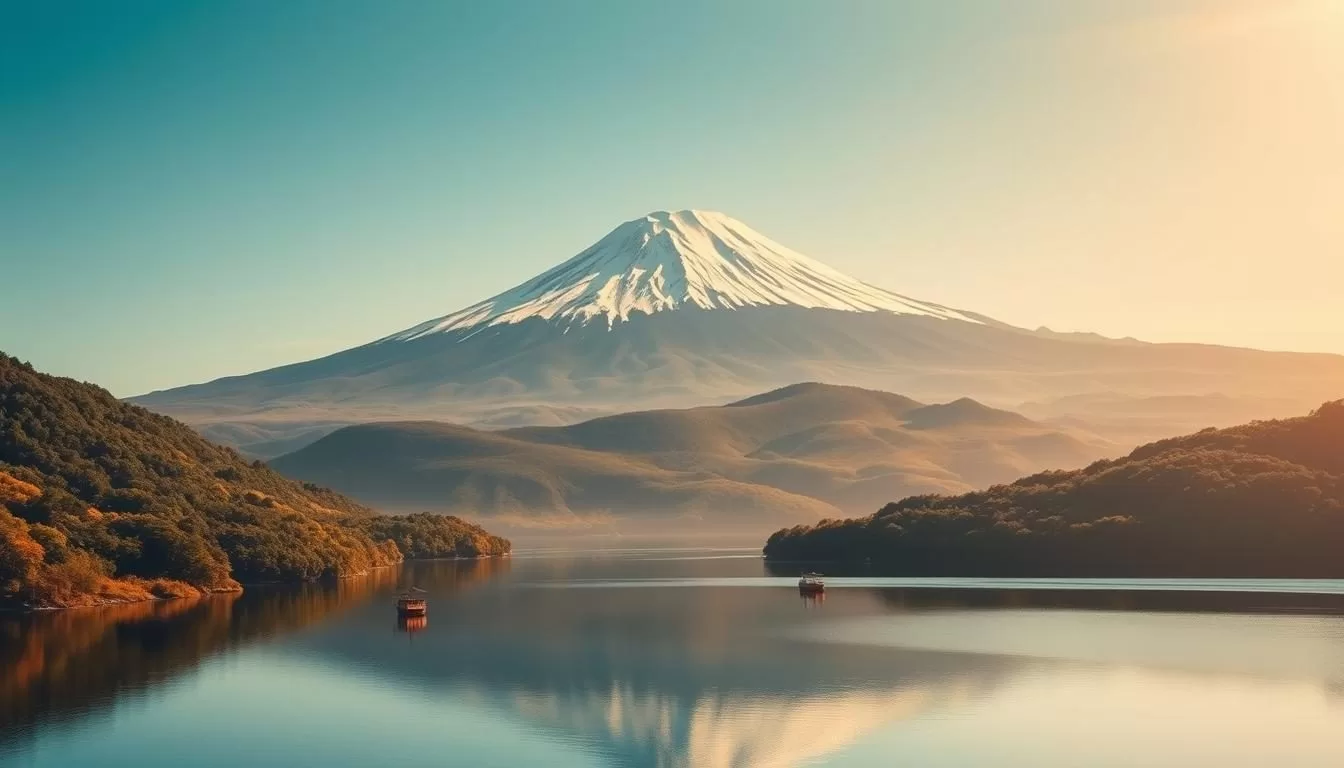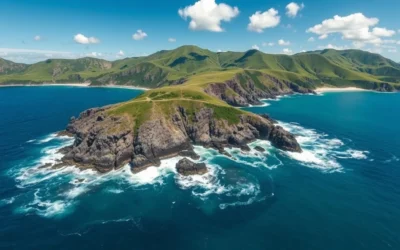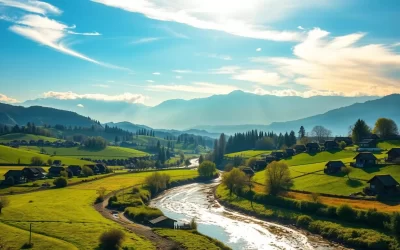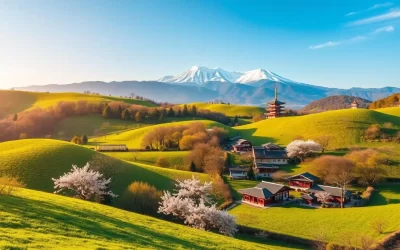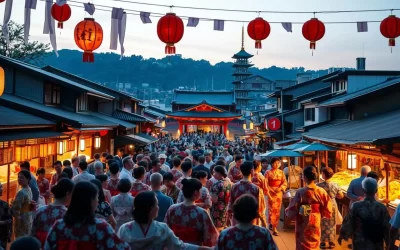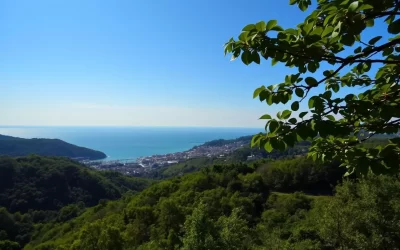Imagine standing before Mt. Fuji, Japan’s majestic highest peak, rising to an impressive 3,776 meters. This nearly perfectly shaped volcano has captivated visitors for centuries, inspiring artists and pilgrims alike.
As you plan your visit, you’ll discover why Mount Fuji is a must-see destination. From scenic views to cultural sites and adventure activities, the experiences around Mt. Fuji are diverse and unforgettable.
Whether you’re looking for a serene experience or an action-packed guide to exploring the region, Mount Fuji has something for everyone. With its rich cultural significance and breathtaking natural beauty, it’s no wonder that this iconic landmark was designated a UNESCO World Heritage Site in 2013.
Discovering Japan’s Iconic Landmark
Your journey to Japan is not complete without experiencing the natural wonder that is Mount Fuji. As one of the country’s most iconic landmarks, Mount Fuji offers a unique blend of natural beauty, cultural significance, and adventure.
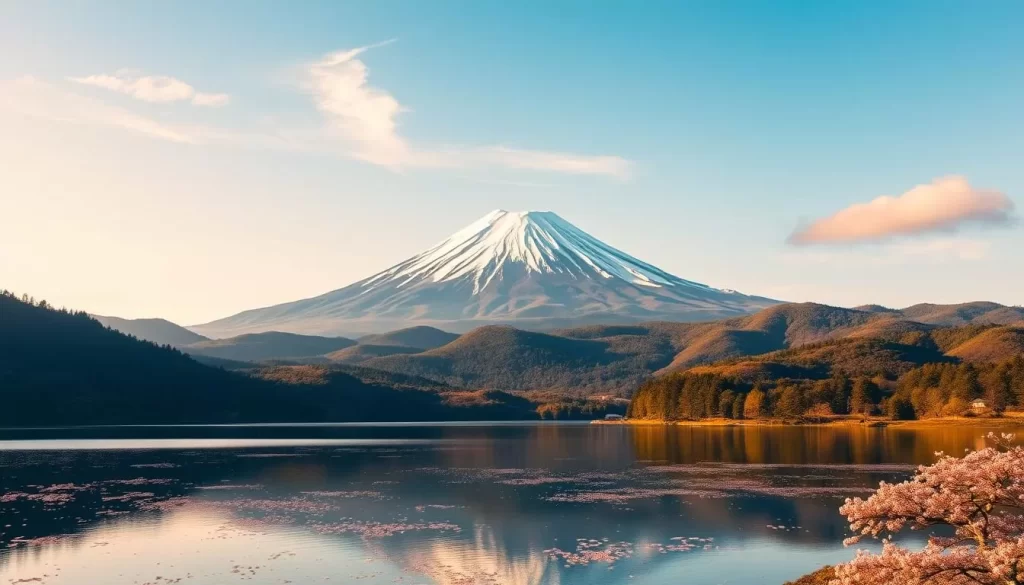
About Mount Fuji
Mount Fuji is the most climbed mountain in the world, attracting over 300,000 climbers annually. The mountain has four hiking trails to the top, which are officially open during the summer months. This limited window contributes to the high volume of climbers, making it a vibrant and dynamic destination.
The mountain’s appeal extends beyond climbing. Its symmetrical cone is a iconic symbol of Japan, appearing in countless works of art and literature. Visitors can enjoy the mountain’s beauty from various viewpoints around the Fuji Five Lakes region.
Best Time to Visit Mount Fuji
Planning your visit according to the seasons can greatly enhance your experience. For those interested in hiking or climbing, summer (July-August) is the best time as the trails are open and mountain huts are operational. If you prefer seeing the mountain with cherry blossoms, spring is the ideal season, especially at viewpoints like Chureito Pagoda.
- Summer (July-August) is perfect for climbing and hiking.
- Spring offers breathtaking views of cherry blossoms framing Mount Fuji.
- Autumn brings colorful foliage, while winter provides the clearest views of the mountain from a distance.
- Early morning or late afternoon often offers the best viewing conditions due to fewer clouds.
Best Viewpoints Around Mount Fuji
The majestic Mount Fuji can be admired from various stunning viewpoints, each offering a unique perspective. Visitors can enjoy the mountain’s splendor from a variety of picturesque locations, each with its own charm.
Arakurayama Sengen Park and Chureito Pagoda
Arakurayama Sengen Park is home to the iconic Chureito Pagoda, a beautiful structure that, when paired with Mount Fuji, creates one of Japan’s most recognizable images. The park is particularly famous during cherry blossom season, when the pagoda is surrounded by blooming sakura trees.
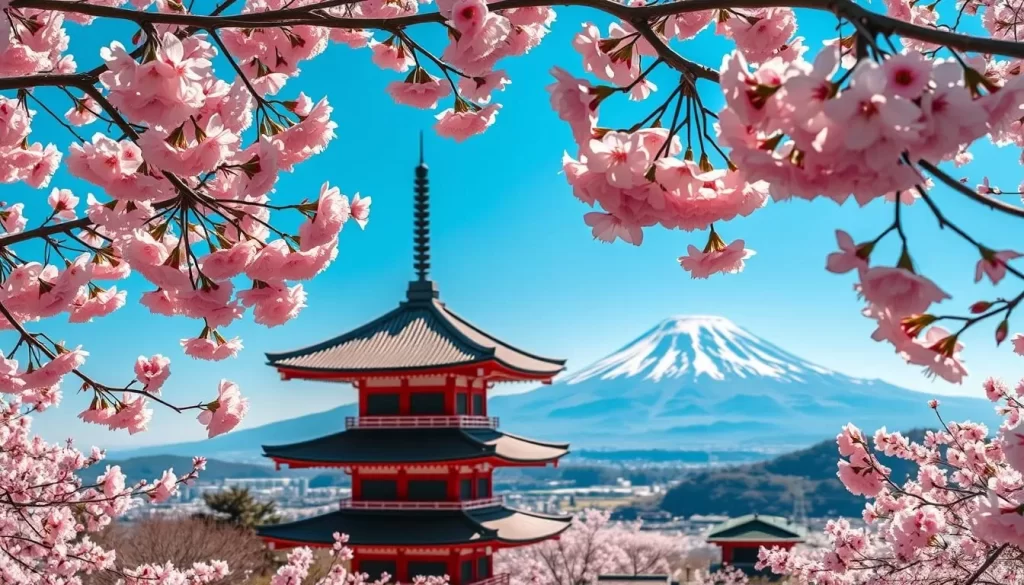
Tenku no Torii
Tenku no Torii, or “Gate of Heaven,” is a torii gate situated on a hill overlooking Mount Fuji, providing a breathtaking view. This scenic spot is especially popular among photographers and those seeking a spiritual connection with nature.
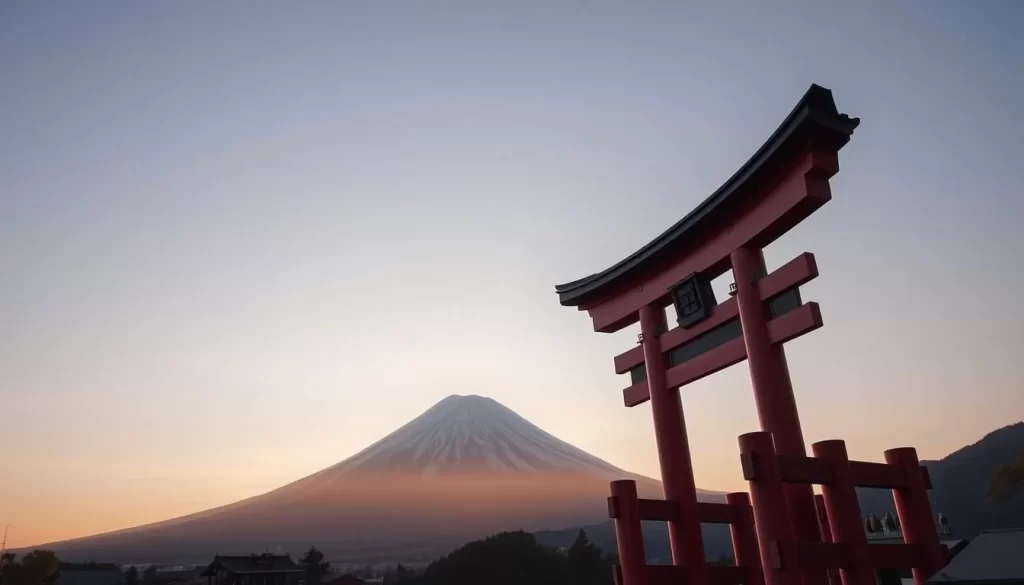
Oishi Park at Lake Kawaguchi
Oishi Park, located on the shores of Lake Kawaguchi, offers incredible views of Mount Fuji rising above the lake. The park is renowned for its flower fields, cafes, and walking trails, making it a perfect spot for photography. You can enjoy the changing flower fields throughout the seasons, from lavender in early summer to cosmos in autumn.
- Experience one of the most photogenic views of Mount Fuji from Oishi Park.
- Visit during different seasons to see the changing flower fields that frame the mountain.
- Enjoy the accessibility of this viewpoint, which is open 24/7 with no entrance fees.
- Explore the walking trails along the lakeshore for different perspectives of Mount Fuji.
- Visit the Kawaguchiko Natural Living Centre within the park to participate in workshops.
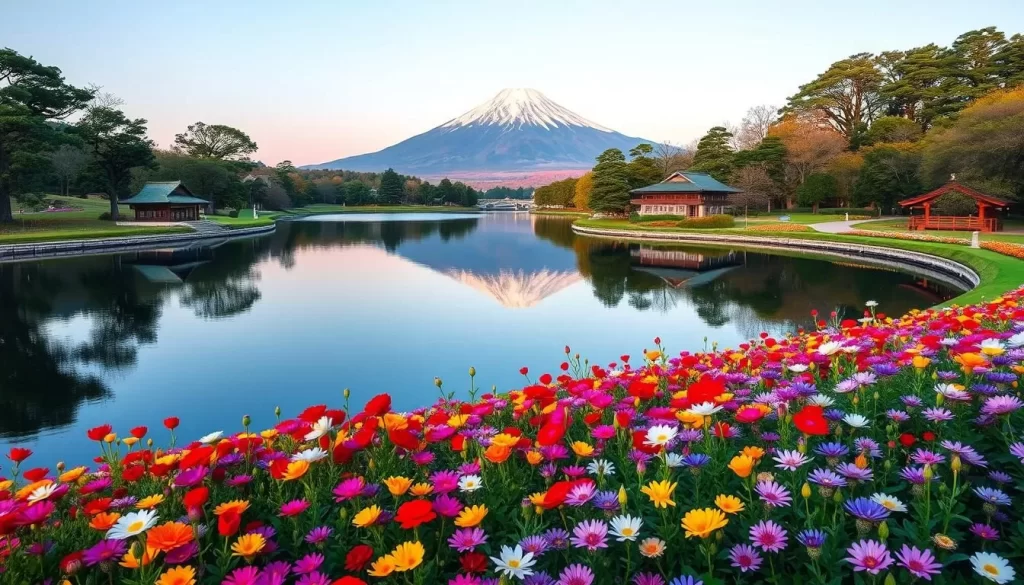
Exploring the Fuji Five Lakes Region
Surrounding Mount Fuji are five beautiful lakes that offer breathtaking views and serene landscapes. The Fuji Five Lakes region is a haven for nature lovers and outdoor enthusiasts, providing a range of activities and stunning scenery.
Lake Kawaguchi
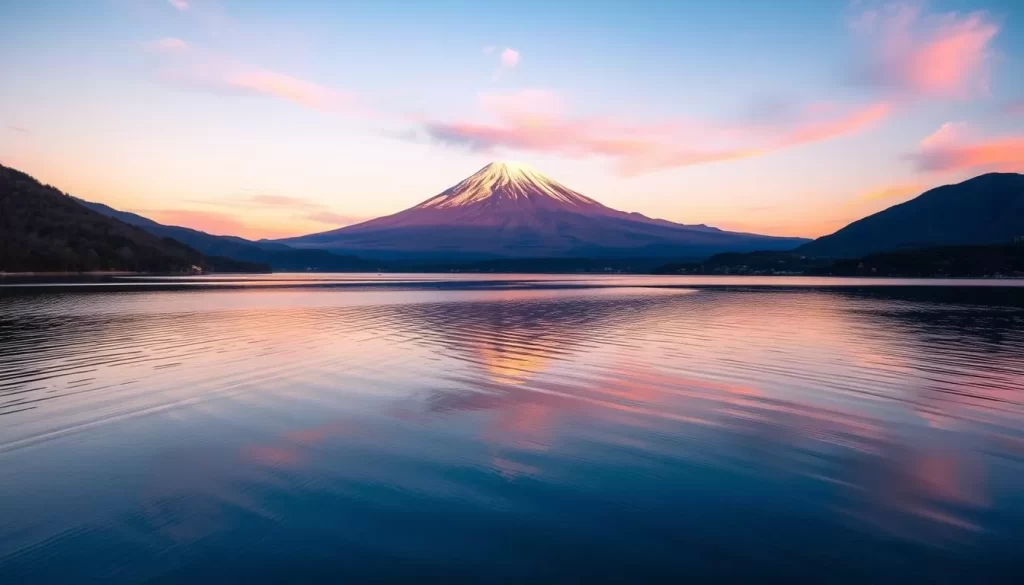
Lake Kawaguchi is one of the most popular lakes in the Fuji Five Lakes region, known for its stunning views of Mount Fuji. Visitors can enjoy a variety of activities, including boating, fishing, and hiking. The lake’s shoreline is dotted with shops, restaurants, and hotels, making it a convenient base for exploring the area.
Lake Yamanakako
Lake Yamanakako is another popular destination in the Fuji Five Lakes region, offering beautiful views of Mount Fuji and a range of outdoor activities. Visitors can enjoy boating, fishing, and hiking, or simply relax and take in the scenery.
Lake Saiko
Lake Saiko is a peaceful and serene destination, known for its natural beauty and tranquil atmosphere. Visitors can enjoy camping, fishing, and boating, or explore the surrounding forests and hills.
Lake Shoji and Lake Motosuko
Lake Shoji is the smallest of the Fuji Five Lakes, offering a serene and peaceful atmosphere. Lake Motosuko, on the other hand, is known for its iconic view, which is featured on Japan’s 1,000 yen note. Both lakes offer opportunities for camping, fishing, and boating, and are ideal for those seeking a more natural and peaceful experience.
Visitors to the Fuji Five Lakes region can enjoy a range of activities, including camping, fishing, and boating. The region’s natural beauty and serene landscapes make it an ideal destination for nature lovers and outdoor enthusiasts. With its five beautiful lakes, the Fuji Five Lakes region is a must-visit destination for anyone traveling to Japan.
Mount Fuji, Japan: Best Things to Do for Nature Lovers
Mount Fuji is a haven for nature lovers, with its surroundings offering a range of activities that showcase its majesty. The area around Mount Fuji is rich in natural beauty, from hiking trails to scenic viewpoints and serene water bodies.
Hiking Trails Around Mount Fuji
Mount Fuji offers several hiking trails that cater to different skill levels, providing breathtaking views of the surrounding landscape. The most popular trail is the Yoshida Trail, known for its accessibility and scenic views.
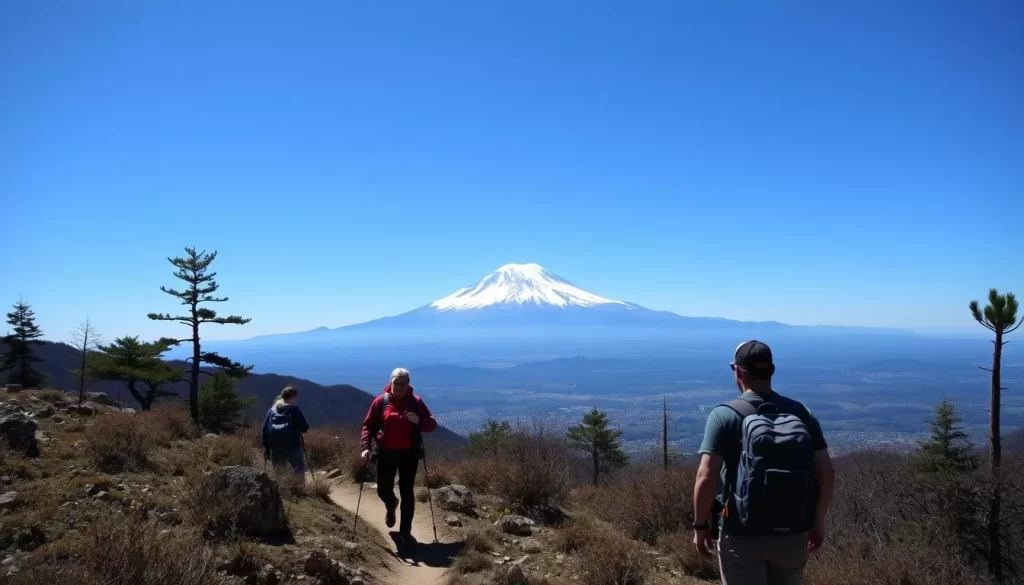
Fuji Panoramic Ropeway
For a panoramic view of Mount Fuji, take a ride on the Fuji Panoramic Ropeway, which offers stunning vistas of the mountain and Lake Kawaguchi.
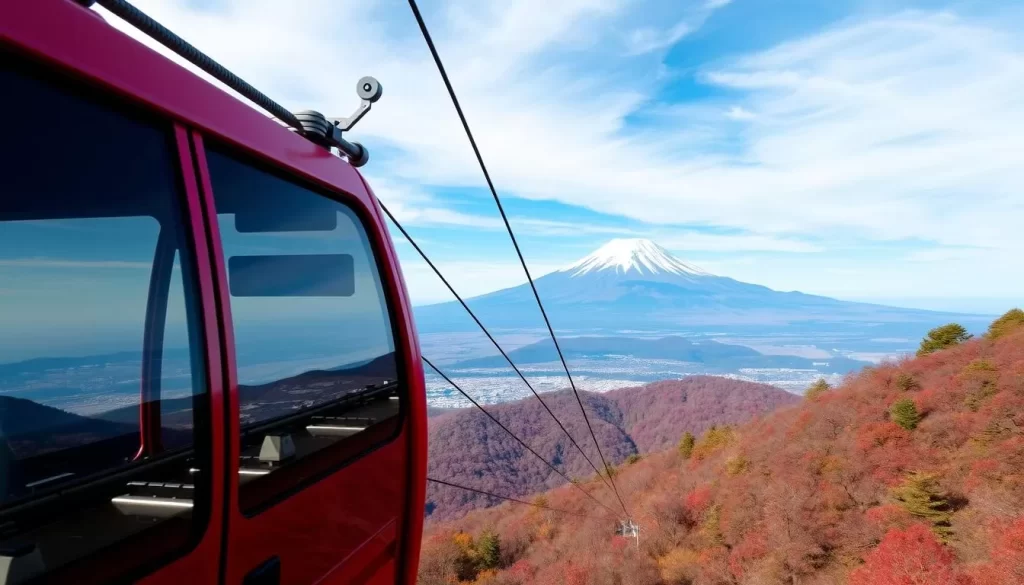
Oshino Hakkai Springs
Oshino Hakkai is a picturesque village featuring eight crystal-clear ponds fed by underground springs from Mount Fuji’s snowmelt. Listed as a UNESCO World Heritage Site, the ponds are surrounded by traditional houses and offer a serene atmosphere. Visitors can enjoy the clarity of the water and the beauty of the surrounding landscape.
- Visit Oshino Hakkai, a picturesque village featuring eight crystal-clear ponds fed by underground springs from Mount Fuji’s snowmelt.
- Learn about the cultural and historical significance of these UNESCO World Heritage-listed ponds.
- Marvel at the extraordinary water clarity that allows you to see colorful fish and aquatic plants thriving at the bottom of the ponds.

Cultural Experiences Near Mount Fuji
From traditional villages to museums and tea ceremonies, the cultural experiences near Mount Fuji are as diverse as they are captivating. You can immerse yourself in the local culture by visiting traditional sites, participating in time-honored ceremonies, and learning about the region’s rich heritage.
Saiko Iyashi-no-Sato Nenba
Saiko Iyashi-no-Sato Nenba is a traditional village that offers a glimpse into rural Japan. You can explore the thatched-roof houses, participate in local crafts, and enjoy the serene surroundings. The village is a perfect place to experience the simplicity and beauty of traditional Japanese life.

Hannokibayashiminzoku Museum
The Hannokibayashiminzoku Museum in Oshino is dedicated to preserving the cultural heritage of the region. You can learn about the history and traditions of the area through the museum’s exhibits, which include artifacts and interactive displays. The museum provides a deeper understanding of the local culture and its significance.

Traditional Tea Experiences
You can experience traditional Japanese tea culture in the shadow of Mount Fuji, particularly in Shizuoka Prefecture, which is famous for producing some of Japan’s finest green tea. Visit tea plantations around the base of Mount Fuji, especially in Fuji City, where the verdant tea fields create a stunning contrast with the mountain in the background. Participate in authentic tea ceremony experiences offered at various traditional venues around the Fuji Five Lakes region, learning about the ritual’s cultural significance and precise movements.
Plan your visit in May when the tea fields are at their most vibrant green before the first harvest, offering the most photogenic views with Mount Fuji in the background. You can sample different varieties of locally grown green tea while learning about cultivation methods, processing techniques, and the ideal brewing temperatures from tea masters.
Thrilling Adventures at Mount Fuji
For thrill-seekers, Mount Fuji offers more than just a visual spectacle; it’s a playground for adventure. The area surrounding Japan’s iconic mountain is teeming with activities that cater to all kinds of enthusiasts, from adrenaline junkies to those seeking more serene experiences.
Fuji-Q Highland Amusement Park
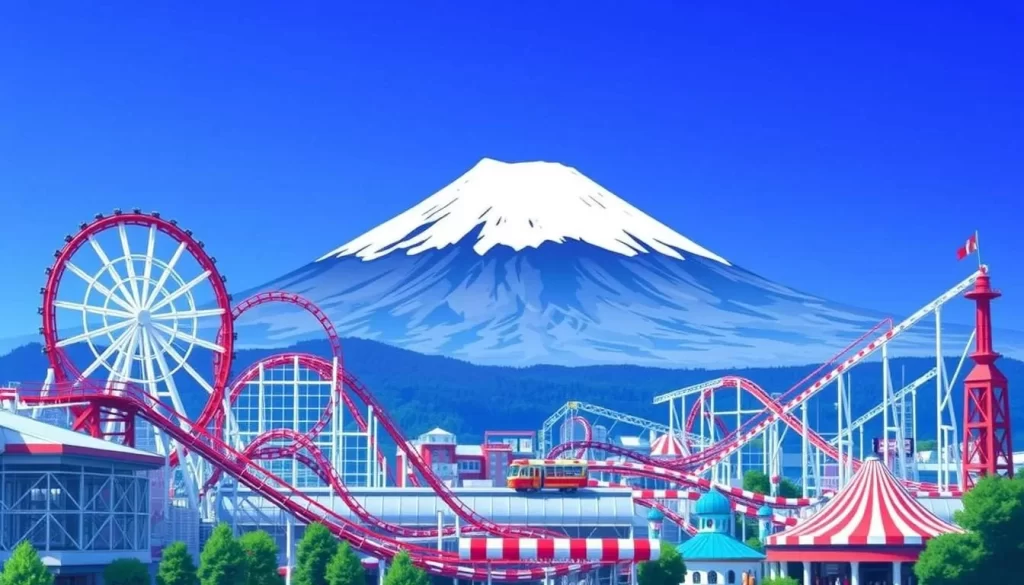
Fuji-Q Highland Amusement Park is a must-visit destination for thrill-seekers. Known for its record-breaking roller coasters, including the world’s fastest, this park offers an exhilarating experience. Visitors can enjoy a range of rides and attractions, making it a perfect day out for families and adventure lovers alike.
Water Activities on the Fuji Five Lakes
The Fuji Five Lakes region offers a variety of water activities that provide unique perspectives on Mount Fuji. You can enjoy water sports such as kayaking, canoeing, and even fishing in the lakes, which are stocked with various freshwater species.
Some of the activities you can enjoy include taking a scenic boat cruise on Lake Kawaguchi or Lake Yamanakako, with some cruises featuring themed boats. For a more peaceful experience, try kayaking on the calmer waters of Lake Saiko or Lake Shoji, offering magnificent views of Mount Fuji.
During the summer, you can also participate in more adventurous water sports like windsurfing on Lake Yamanakako or water skiing and jet skiing on Lake Motosuko. The lakes’ beaches become popular swimming spots during the warmer months, providing a relaxing way to enjoy the scenery.
Day Trips from Mount Fuji
While Mount Fuji is a must-visit destination, the surrounding areas offer a plethora of activities and sights worth exploring on a day trip. The region around Mount Fuji is rich in cultural experiences, natural beauty, and thrilling adventures, making it an ideal location for travelers looking to explore beyond the iconic mountain.
Hakone Hot Springs
Hakone is a popular day trip destination from Mount Fuji, famous for its hot springs, scenic Lake Ashi, and picturesque views of the iconic mountain. You can enjoy a relaxing soak in one of the many onsen (hot springs) resorts, take a cruise on Lake Ashi for panoramic views of Mount Fuji, or explore the Owakudani Valley for hot spring-fed black eggs and volcanic activity.
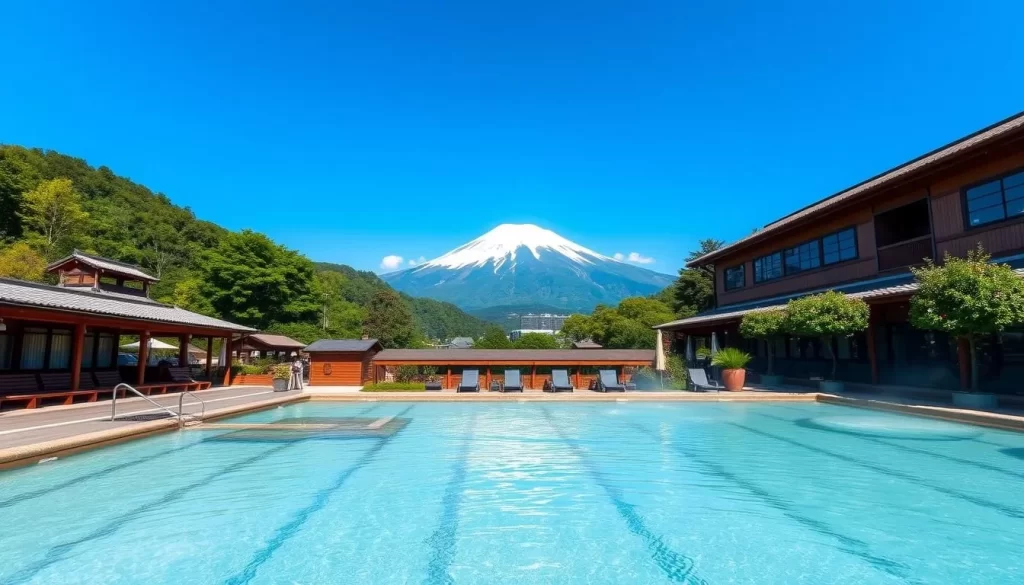
Gotemba Premium Outlets
For a day trip that combines shopping with breathtaking views, head to Gotemba Premium Outlets, one of Japan’s largest outlet malls located at the southeastern foot of Mount Fuji. Here, you can browse over 200 domestic and international brand stores offering discounted prices on fashion, sportswear, accessories, and household items.
- Combine shopping with Mount Fuji views at Gotemba Premium Outlets.
- Browse over 200 domestic and international brand stores.
- Enjoy a unique shopping experience with Mount Fuji as a backdrop.
- Plan a full day trip to explore the expansive outlet complex.
- Consider visiting on weekdays to avoid crowds.
- Take advantage of tax-free shopping available for foreign visitors.
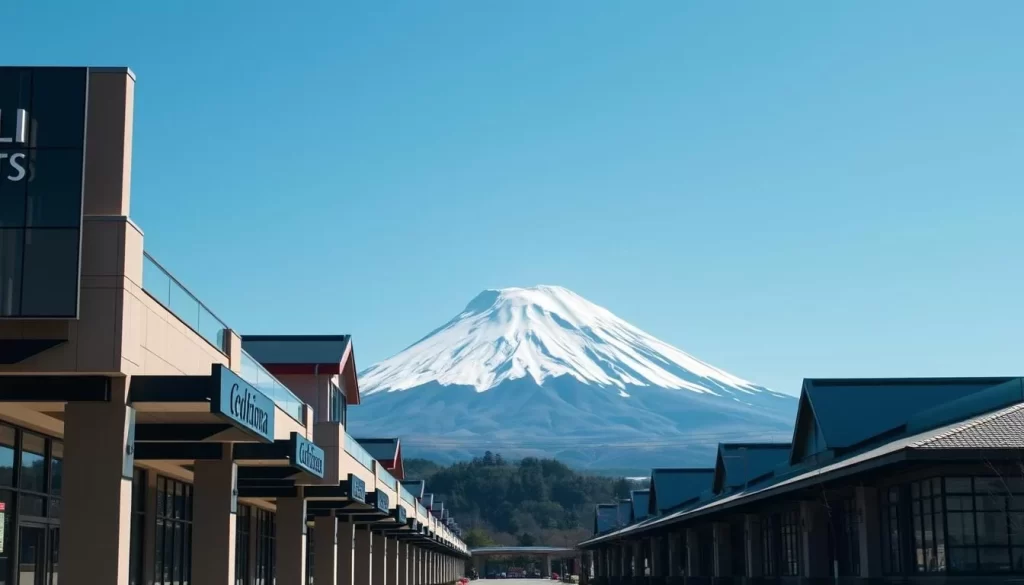
Practical Information for Visiting Mount Fuji
Mount Fuji, an iconic destination, demands preparation for an unforgettable visit. To make the most out of your trip, it’s essential to understand the logistics of traveling around Mount Fuji, where to stay, and where to enjoy the local cuisine.
Getting Around Mount Fuji
Getting around Mount Fuji involves choosing the right transportation. The Fuji Five Lakes region is well-connected by bus and car routes, making it relatively easy to navigate. You can also consider renting a car or booking a guided tour for more convenience.
Where to Stay Near Mount Fuji
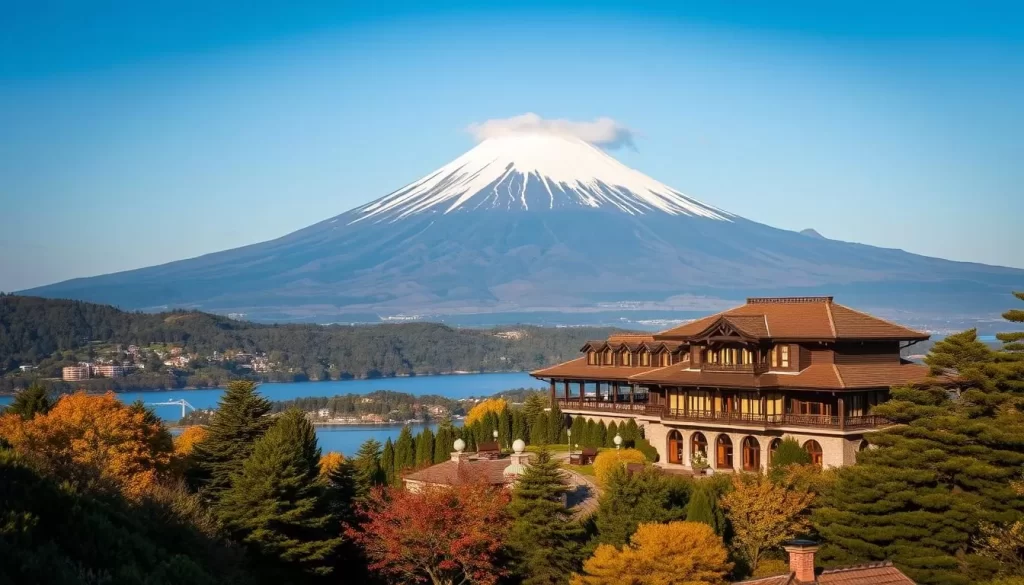
When it comes to accommodations near Mount Fuji, there are numerous options to suit various budgets. For the best hotels near Mount Fuji, consider staying in areas like Kawaguchiko or Hakone for easy access to the mountain and its surrounding attractions.
Where to Eat Around Mount Fuji

The area around Mount Fuji offers a diverse dining scene, ranging from traditional Japanese restaurants serving local specialties to international cuisine, including Italian restaurants. You can sample regional specialties like houtou (flat noodles in miso soup with vegetables) and yoshida udon (thick noodles in a meat-based sauce). Don’t miss trying unique Mount Fuji-themed foods and drinks, such as Mount Fuji-shaped desserts or the famous black eggs from Owakudani in nearby Hakone. Restaurants with Mount Fuji views, particularly around the lakes, offer meals with spectacular vistas. Explore food stalls and small eateries in tourist areas like Oshino Hakkai and Saiko Iyashi-no-Sato Nenba for authentic local snacks and street food.
Conclusion
Your journey to Mount Fuji is not just about visiting a mountain; it’s about immersing yourself in a world of natural wonders and cultural treasures. The area around Mt. Fuji offers a diverse range of experiences, from hiking and water activities to cultural sites and relaxing hot springs. When planning your trip, consider an overnight stay to fully appreciate the changing moods of Mount Fuji. As a travel guide, this article aims to help you make the most of your visit. Remember to respect the natural environment and cultural significance of this UNESCO World Heritage Site. With its unique blend of adventure, culture, and relaxation, Mount Fuji is a destination that promises an unforgettable travel experience. Plan your return visit to trip during a different season to experience the new perspectives and activities.
The above is subject to change.
Check back often to TRAVEL.COM for the latest travel tips and deals.
Here are some Tours & Sightseeing suggestions that might pique your interests!
